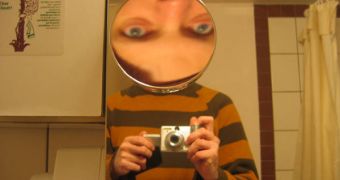People who suffered heavy disfigurement following an accident, or who were simply born this way, tend to walk around the city with their faces covered, and with a fast pace that doesn't allow many others to see them, because, if they would, they would stare. And most of them, psychologists say, wouldn't do it on purpose, but simply because we may be hardwired to do so. In other words, if we notice a person with traits very different from our own, as in not symmetrical, we immediately begin to scout them out.
“We stare. Even if you don’t want to, even if your better judgment tells you ‘I need to be nice to this person. They’ve obviously suffered a tragedy,’ there’s something so alien and uncomfortable – it just doesn’t look like us. It goes back to a very primal thing,” Erika Rosenberg, who is now a facial expression expert focused on evolution, said. She works out of the Center for the Mind and Brain at the University of California in Davis (UCD).
“When a face is distorted, we have no pattern to match that. All primates show this [behavior, when confronted with] something very different, something they have not evolved to see. They need to investigate further. ‘Are they one of us or not?’ In other species, when an animal looks very different, they get rejected,” the expert added. When we meet a new person, wherever that may take place, our brains work relentlessly to analyze their facial features, and to basically respond to the primordial question – are they safe or dangerous?
This process of cataloging the people we meet is actually an evolutionary trait, anthropologists say. We spend a lot of time during our lives outside of the immediate family, and we, as a species, interact with many other members of our own kind over the course of our lives. In order to do that safely, we need a filtering mechanism, which tells us from the get-go if someone is good, bad, or if they pose an imminent threat (relatively), by simply looking at the eyes, the nose, and superficially over other facial features, Wired reports.
However, in the course of our analysis, when we identify elements that shouldn't be there, such as for instance when looking at the disfigurements suffered by burnt victims, our eyes instinctively dwell on the unusual traits. They pop up inside our brain for the very simple reason that we have no other, similar characteristics to compare them with in our internal “database,” so the brain wants more information. And, despite being impolite, the best way to get them is by looking continuously at the object of fascination.
In addition, psychologists argue, our entire society has evolved to be comprised of individuals that have normal and fully functional faces. We also learned millions of years ago to convey a large array of emotions through non-verbal communication, which basically refers to expressions, head nods, winks, hand gestures, body posture, and so on. When the face cannot convey these emotions anymore, then dialogs become awkward.

 14 DAY TRIAL //
14 DAY TRIAL //